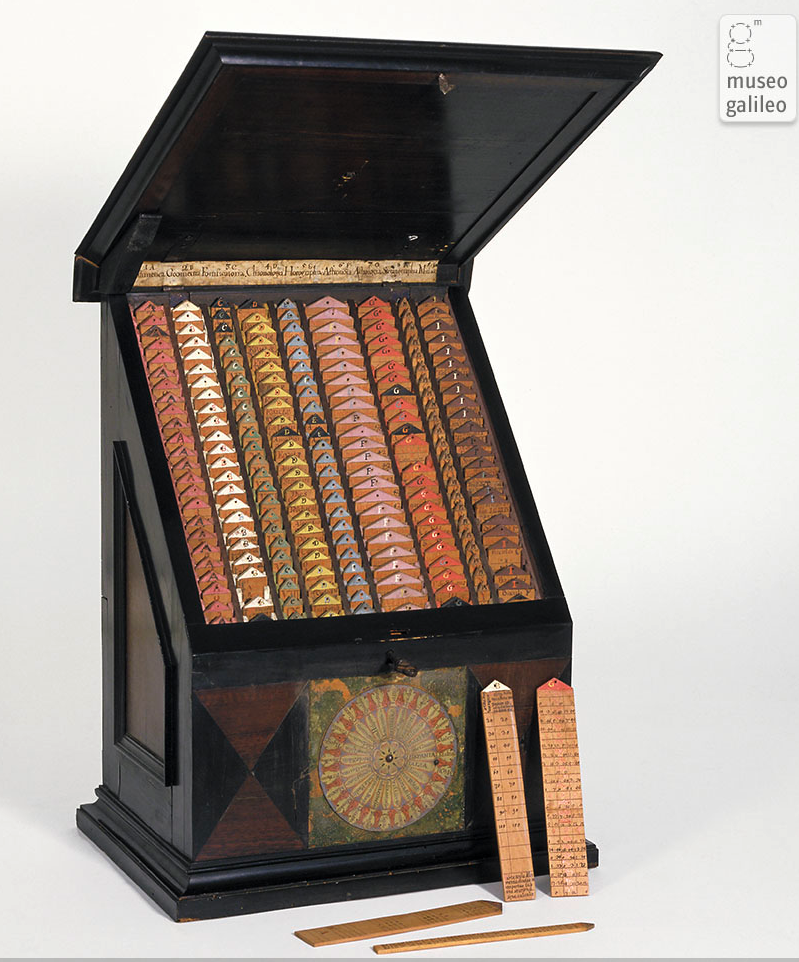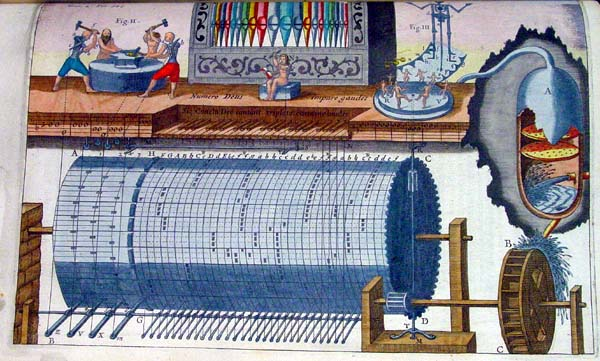created 2025-05-20, & modified, =this.modified
rel: Music Performance Issues 1600-1900 by Beverly Jerold Jacques de Vaucanson’s Digesting Duck The Machine As Seen at the End of the Mechanical Age - MoMA
NOTE
Discovered in the University of Glasgow Book of the Month archives.
The Universal Musical Art, or the Great Art of Consonance and Dissonance, was a 1650 work of Athanasius Kircher.
It features birds and their songs musically notated besides their pictures.
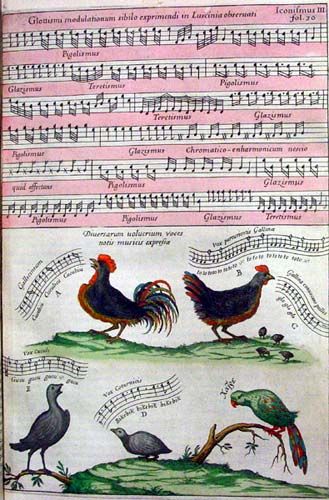
The plate shown above to the left depicts ‘The Harmony of the Birth of the World’ (Harmonia Nascentis Mundi), represented by a cosmic organ with six registers corresponding to the days of creation. The legend “Sic ludit in orbe terrarum aeterna Dei Sapientia” (thus plays the wisdom of the everlasting God in the earthly orb) appears under the keyboard. The six scenes follow Genesis as drawn by Robert Fludd, showing seas, earth, plants, planets, animals and man.
There is an early espionage device where voices from the lower piazza outside are conveyed through a horn in the wall (resembling an air canal?), to a statute inside.
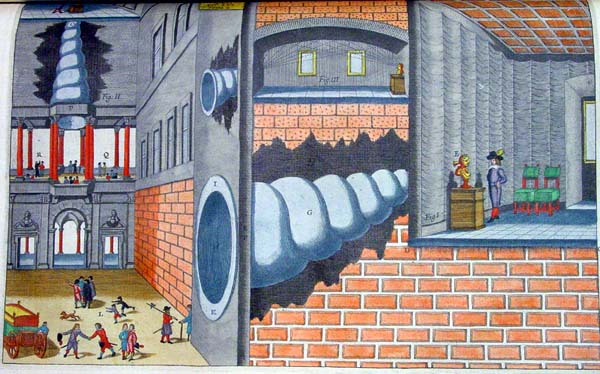
Arca Musarhthmica
The arca musarythmica is a device by which a non-musician could compose a piece of four-part music using prearranged musical fragments inscribed in wands arranged in columns inside the box. Each type of wand corresponded to a particular metrical unit e.g. 4, 5, or 6 syllables, and on each wand there were examples of florid counterpoint on one side and more simple note-against-note settings on the other. Once the phrase to be set had been analyzed into its fundamental syllabic units, each of these could be set to an example taken from a wand of the appropriate type.
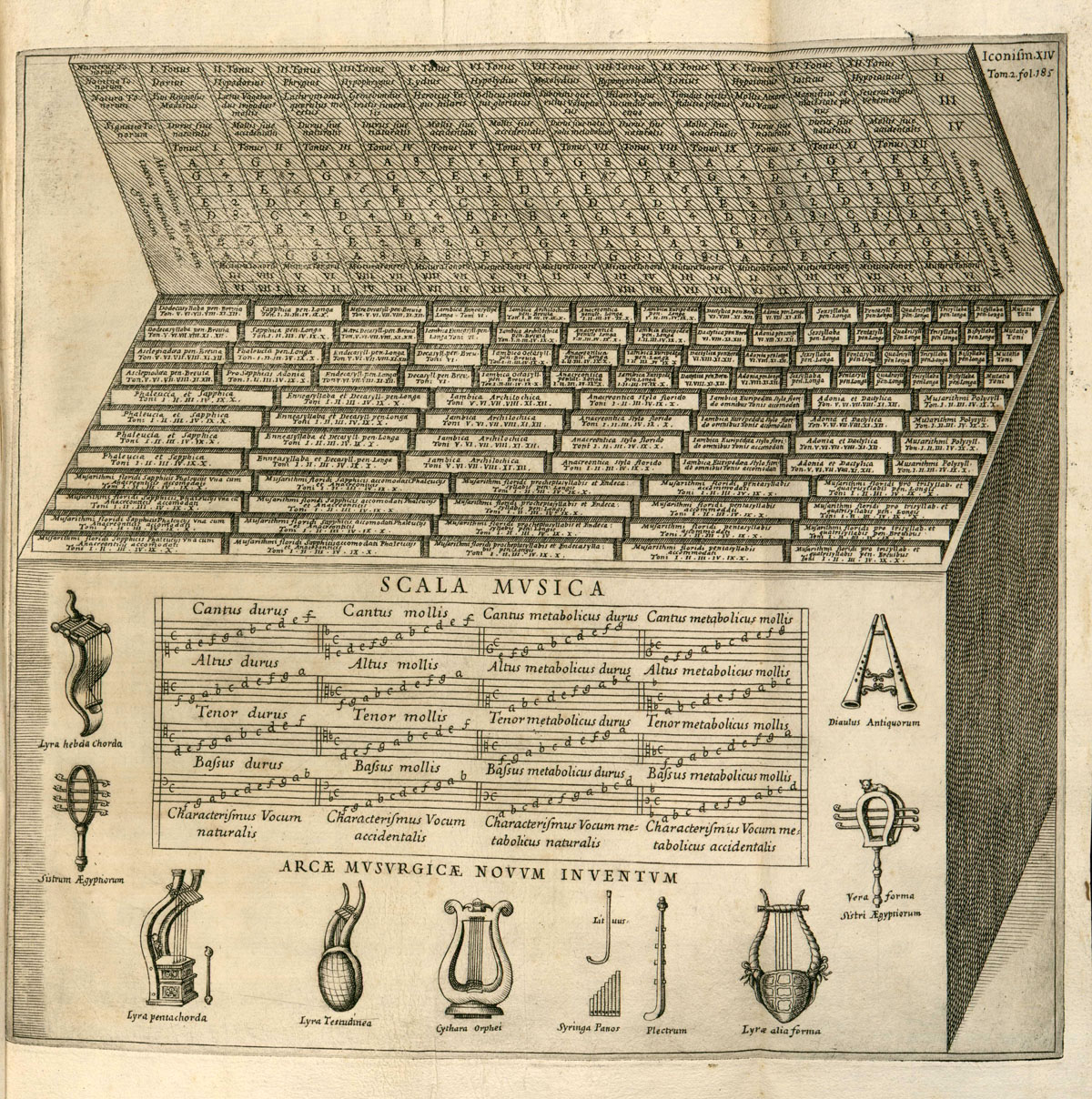
The device allowed non-musicians to compose church music. It used combinatorial techniques to produce millions of pieces of four part polyphonic music.
Athanasius wrote,
Mechanical music-making is nothing more than a particular system invented by us whereby anyone, even the ἀμουσος [unmusical] may, through various applications of compositional instruments compose melodies according to a desired style. We shall briefly relate how this mechanical music-making is done and, lest we waste time with prefatory remarks, we shall begin with the construction of the Musarithmic Ark.
The arca was a box containing wooden rods or slats. Each slat has numbers which corresponds to notes in a scale or mode, and assorted rhythmic treatments.
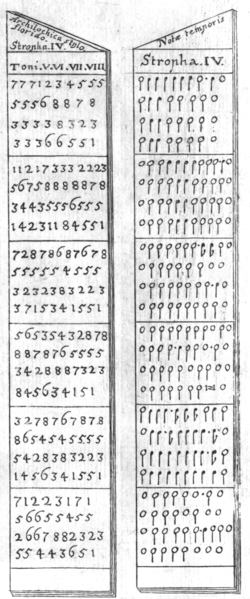
Deep Dive
Kircher promised that the device could automatically generate musical settings for four-voice chorus of any given text, in any language. The ark holds a set of data tables, which together with a list of rules for how to use the tables, amounts to a computation device for composing music.
Kircher presented this as an embodiment of mathematical permutations. Like many of his seventeenth-century contemporaries, he understood music as sounding number, an embodiment of the mathematical order inherent in God’s created universe, and a reflection of the perfection of God himself. Out of the infinite variety of possible combinations of notes and rhythms, the user of the ark selects a specific set of permutations and thus imitates God in his original act of creation.
The use the arca you’d
- prepare a text in Latin or another language, divided into short and long syllables.
- choose the aspects of musical setting you want the ark to create
- the style and texture of the music
- the mood or character which determines the choice of one of 12 musical tones.
- the meter (duple meter, triple minor, or triple major) or florid style
- Syntagma - divisions of the arc
- Pinax - each Syntagma has a set of rods or pinakes
- Column - each pinax has columns of data, either free choice or based on the order of lines in the poem.
- Write the music down - using palimpsest phontacticum, or music paper you’d draw out staves and put appropriate clefs for the voices
- Match the pitches, rhythms and syllables
- Make adjustments, for example if notes go out of range shift them by octaves.
Organum Mathematicum
The OM was an information device or teaching machine, that could be used for calculations including arithmetic, cryptography, and music. Some features :
- Music - rods could be used to compose music
- Cryptography - rods could encrypt and decrypt using cyclic transposition cyphers, based on a keyword.
- Astrology - This section had tables describing movements for the visible planets, and the constellation Draco, and also provided astrological interpretations for the 12 zodiac signs.
- Chronology - the rods could be use to determine the date of Easter and other holidays positioned relative to it.
